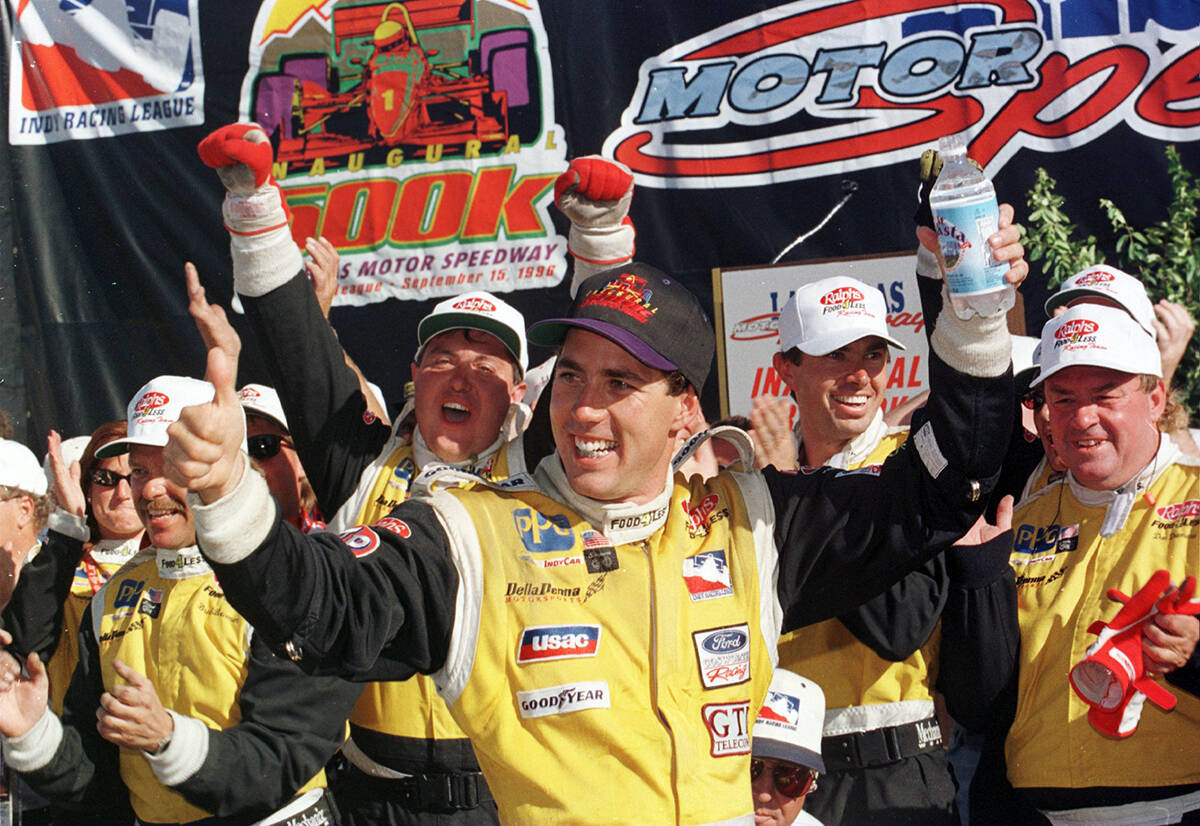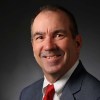Fast times at LVMS: Speedway marks 25-year anniversary
There were 67,132 spectators on hand when Las Vegas Motor Speedway opened Sept. 15, 1996, with an Indy Racing League event.
Thousands more were stuck in traffic on Interstate 15 and Las Vegas Boulevard.
They never saw a young lead-foot from Southern California named Richie Hearn take the checkered flag in a crashed-filled race that was more like a demolition derby.
There were 1,001 details to consider on opening weekend. Traffic flow apparently was not one of them.
“One of the news stations showed people who still had not gotten into the track (by the end of the race) ripping up their tickets on live TV,” recalled John Bisci, LVMS’ first publicity director.
But that proved to be little more than a bug on the helmet visor of the speed plant 15 miles northeast of Las Vegas, which marks its 25-year anniversary Wednesday as a provider of high-speed thrills.
“It’s surprising (because) it went so quick. But it has been a good 25 years,” said Richie Clyne, whose vision literally paved the way for LVMS being built.
Group project
As founder and point man of the estimated $72 million project that wound up costing about three times that, Clyne deservedly receives much of the credit for LVMS getting up to speed.
But he was quick to deflect praise to financial backers and casino moguls Ralph Engelstad and Bill Bennett; Mel Larson, a former NASCAR driver and vice president at Circus Circus who knew just about everybody there was to know in major league auto racing; and former New Hampshire Motor Speedway owners Bob Bahre and his son, Gary, in pushing the massive undertaking across the finish line.
“It wasn’t just me; there were great people involved,” Clyne, 67, said repeatedly during a telephone conversation from New Hampshire, where he has a summer home.
After surviving the IRL opener, LVMS made its NASCAR debut with a Truck Series race in November 1996. Bruton Smith, whose Speedway Motor Sports Inc., portfolio includes Charlotte Motor Speedway and eight other tracks, purchased the facility for $215 million in December 1998.
Chris Powell was named LVMS president and general manager — titles he still holds today — as part of the transaction.
New owners add on
“When I got here and interacted with Richie, he was such a character. I wondered how he was able to get this fabulous facility built,” Powell said. “And then after living in this town for a year or two, it became apparent to me that Richie was maybe the only guy who could have gotten it built.”
LVMS’ original blueprint did not include the giant spectator terraces, Neon Garage and myriad other amenities that have transformed it into a major destination for auto racing fans. Reconfiguring the track to make it more conducive to the marquee NASCAR Cup Series also would not have happened without Smith’s deep pockets.
Las Vegas is one of a handful of tracks that hosts two Cup Series races. Though NASCAR attendance has slipped here and around the country and seating has been halved to about 80,000, LVMS remains the largest professional sports facility in Nevada.
“Whether it’s a source of entertainment or job opportunities, the people that we hire and the vendors we contract with to help stage these events has an enormous impact on people’s lives,” Powell said.
Green flag falls
When nearly 70,000 race fans and curious onlookers eventually made their way into the sprawling grandstands on opening day 25 years ago despite the track lacking finishing touches, it became apparent that LVMS’ potential was even more eye-opening than Arie Luyendyk’s pole qualifying speed of 226.491 mph.
The two-time Indy 500 winner was the best known of the 28 drivers who started the race sanctioned by the IRL, a series created by then-Indianapolis Motor Speedway chief executive Tony George as an alternative to the established CART series, which featured most of the era’s top drivers.
But the Flying Dutchman was one of 10 drivers who crashed, as blowing sand turned the 1.5-mile oval into a skating rink for the journeymen participants, including one (Brad Murphey) who had been a rodeo cowboy.
Tony Stewart, who would win three NASCAR Cup Series titles after switching to stock cars, suffered a broken collarbone and neck injuries after clouting the wall. But a spectacular flip by sports car veteran Johnny O’Connell while running third 15 laps from the end was the day’s most frightening incident.
O’Connell waved to the crowd on the main straightaway after crawling from his wrecked car.
There were so many crashes and caution laps that ABC pulled the plug on the race, which ran long over its time allotment, to switch to the evening news.
Icing on the cake
Those reporting from the infield garages — a media center was months from being completed — had little idea of what was happening in the closing laps.
“I backed my wife’s car into the garage/media center, turned on the radio and took one of our (news conference) microphones and put it on the back shelf — that’s how we listened to the end of the race,” Bisci recalled.
Somehow, like Johnny O’Connell in his upside down race car, Las Vegas Motor Speedway and all who were part of its original race day survived and prospered.
“It was a good project,” track founder Clyne said of seeing his vision and dream come to fruition on that windswept day 25 years ago, and how the speedway’s reputation has grown since Smith purchased it.
“I’ve always said we built a hell of a cake, and then Bruton put the icing on it.”
Contact Ron Kantowski at rkantowski@reviewjournal.com or 702-383-0352. Follow @ronkantowski on Twitter.
LVMS turns 25
Owner: Speedway Motorsports Inc.
Opened: Sept. 15, 1996
Capacity: 80,000
First event: Indy Racing League Las Vegas 500K
Major events: Pennzoil 400, South Point 400 NASCAR Cup Series races; NASCAR Xfinity Series; NASCAR Truck Series; NHRA spring and fall races. Electric Daisy Carnival (nonracing)
Track record: Arie Luyendyk, 226.491 mph, 1996 IRL qualifying


















